Abraham Lincoln’s Tomb- Guide to Lincoln Tomb State Historic Site
Purchases made through links earn us a small commission, at no extra cost to you.
Abraham Lincoln is one of the most significant figures in American history and politics. Under Abraham Lincoln’s leadership as the 16th President of the United States, the Union was defended and preserved during the Civil War, slavery was abolished, and the U.S. economy was modernized as the federal government’s economic influence expanded.
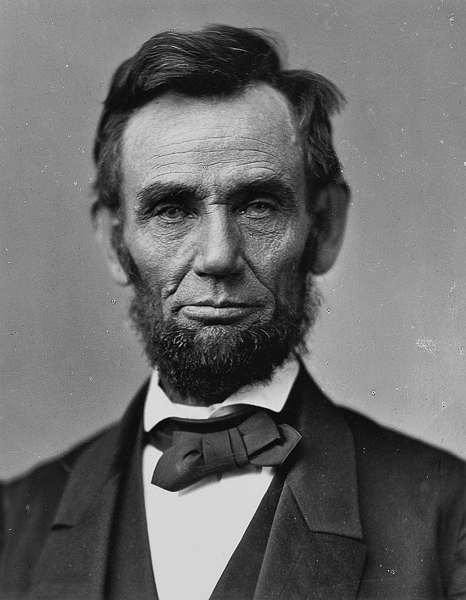
Often ranked by historians, political scientists, and the general population as the greatest president in American history, it’s appropriate that Abraham Lincoln’s burial site in Springfield, Illinois reflects his momentous achievements and contributions to American society.
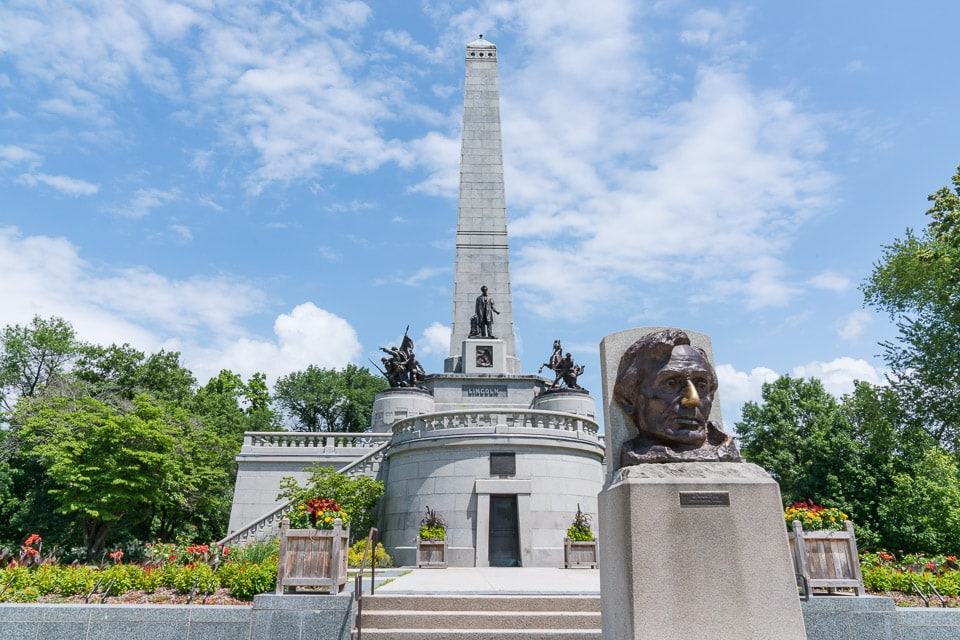
Before we share some information about Lincoln’s tomb and what to expect when visiting it, here’s a brief background about Abraham Lincoln and why he was so important.
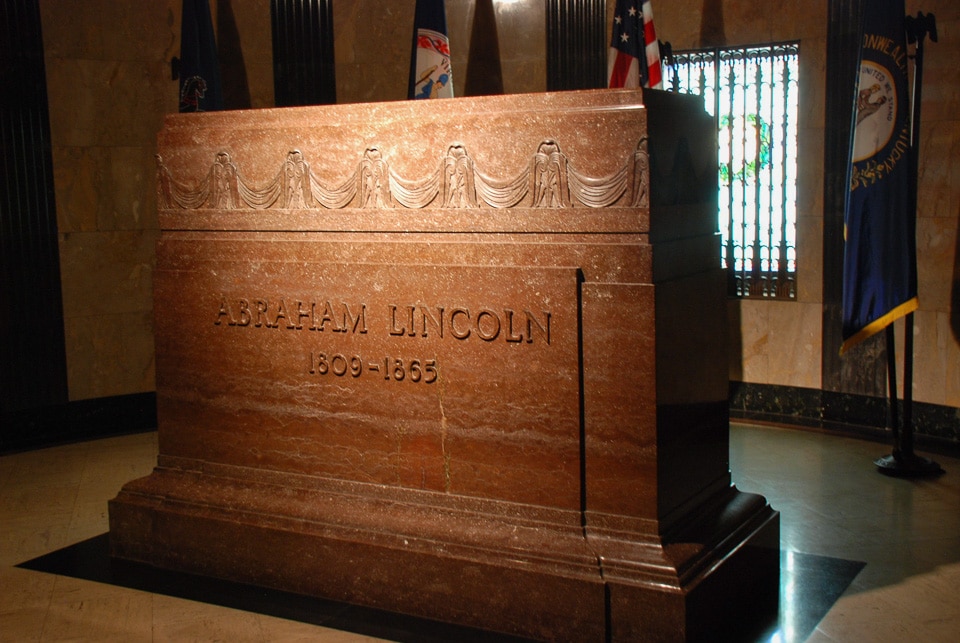
In This Post
Who Was Abraham Lincoln?
Born on the 12th of February, 1809, Lincoln came from humble beginnings. He was famously born in a log cabin in Kentucky and spent his childhood on the American frontier in Indiana. With no schoolhouses, the young Lincoln taught himself and went on to become a lawyer, then a political party leader, state legislator, and congressman.
After leaving politics to return purely to law, Lincoln was drawn back to the political sphere in 1854 with the passing of the Kansas-Nebraska Act, which legalized slavery in these territories. Becoming the leader of the newly formed, antislavery Republican Party, he drew national attention in debates surrounding slavery, among other issues, and eventually ran for president in 1860.
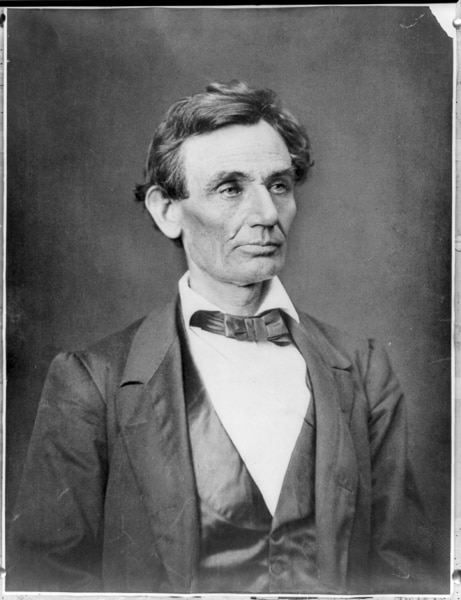
Lincoln won the presidency, but his opposition to slavery was a catalyst for the secession of slaveholding Southern states, and ultimately the Civil War (1861-1865).
In addition to leading the Union to victory during the Civil War, one of Lincoln’s biggest achievements was the passing of the 13th Amendment, which outlawed slavery and freed enslaved people in the United States, while also pressuring border territories to do the same.
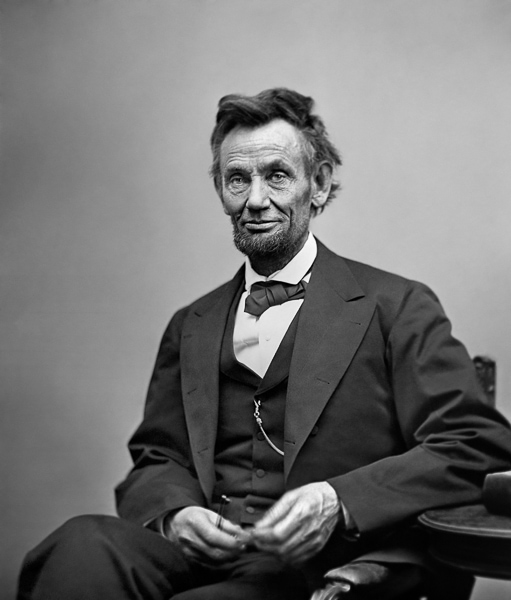
History of Lincoln’s Tomb
When President Lincoln died on the 15th of April, 1865, a group of Springfield locals banded together to create the National Lincoln Monument Association. This organization had one goal at its core: to raise funds to create a memorial fitting for the late, great president. The response to the association’s call for donations was unprecedented and money flooded in from across the country to help build Abraham Lincoln’s tomb.
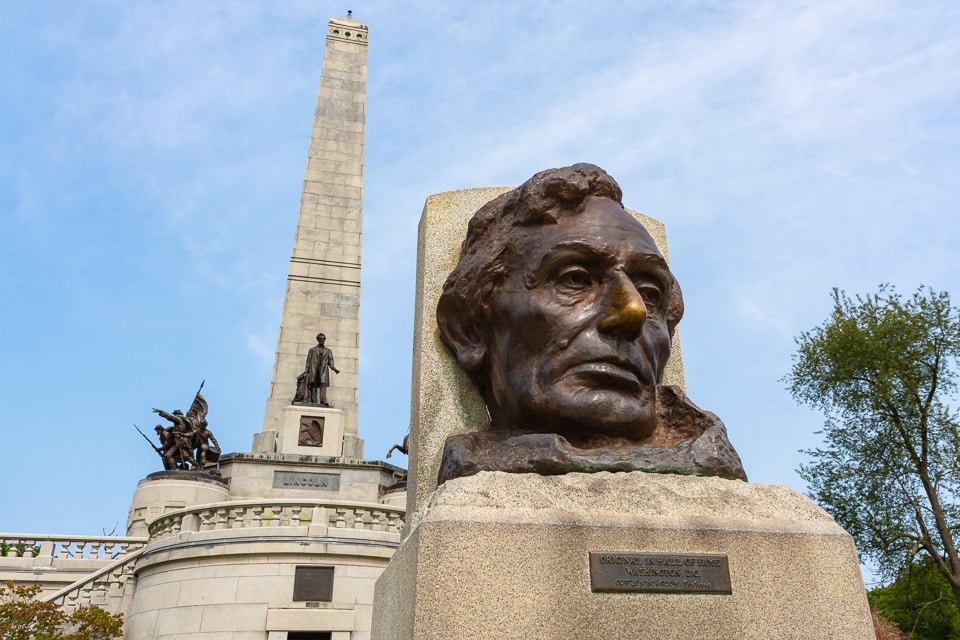
Following a lying-in-state at the Illinois State Capital for one night, Lincoln’s coffin was placed inside a receiving vault at Oak Ridge Cemetery, then later a temporary vault near the proposed memorial site.
Construction of the monument for Abraham Lincoln at Oak Ridge Cemetery took place between 1868 and 1874. Even before the mausoleum’s completion, the late president and his three youngest sons were interred in the unfinished structure in 1871.
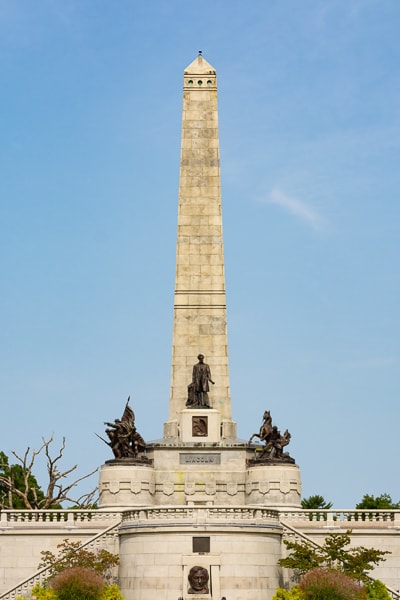
Later, in 1895, the State of Illinois came into ownership of the Lincoln Tomb. By this time, the memorial to the former president had actually fallen into a state of disrepair.
A project to restore Lincoln’s tomb to its former glory was carried out between 1899 and 1901. Around this time, Lincoln’s remains were moved to their final resting place- a vault 10 feet below the main chamber of the tomb- at the request of his only surviving son, Robert Todd Lincoln.
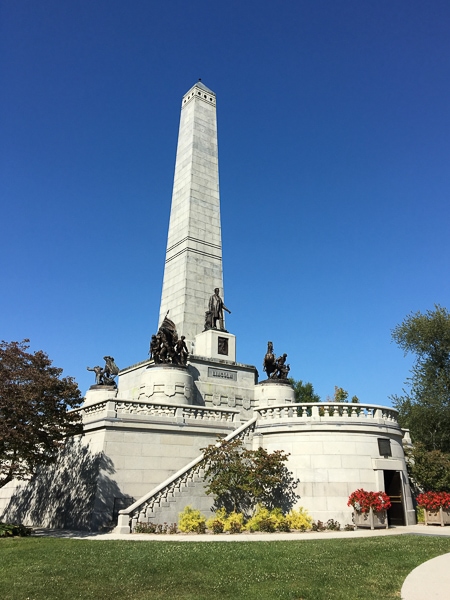
After its restoration, the Lincoln Tomb was re-dedicated to the late president by another president, Herbert Hoover, in 1931. On December 19, 1960, the Lincoln Tomb was listed as a National Historic Landmark and, 20 years later, was inscribed on the National Register of Historic Places.
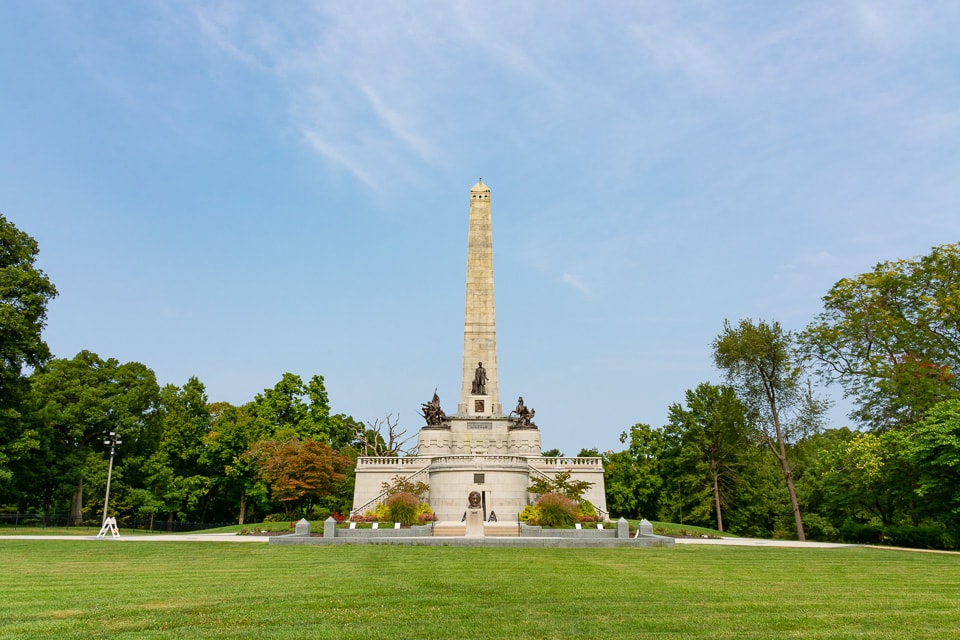
Today Abraham Lincoln’s burial site is still owned and operated by the State of Illinois as the Lincoln Tomb State Historic Site.
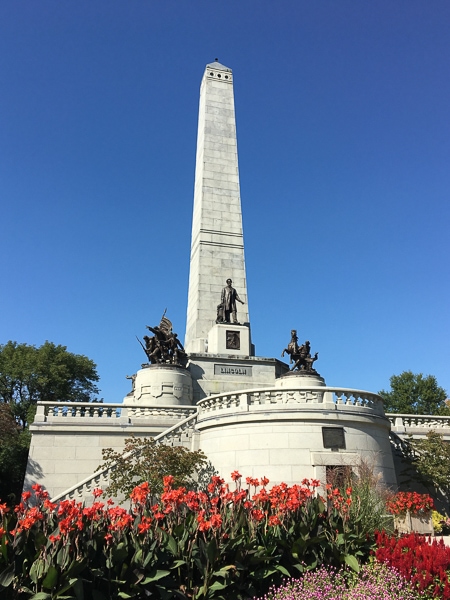
Design of the Lincoln Tomb
Headed up by Larkin Goldsmith Mead, Jr., an American neoclassical sculptor, the design of Lincoln’s final resting place is suitably neoclassical. It is also suitably grand for the influential figure himself.
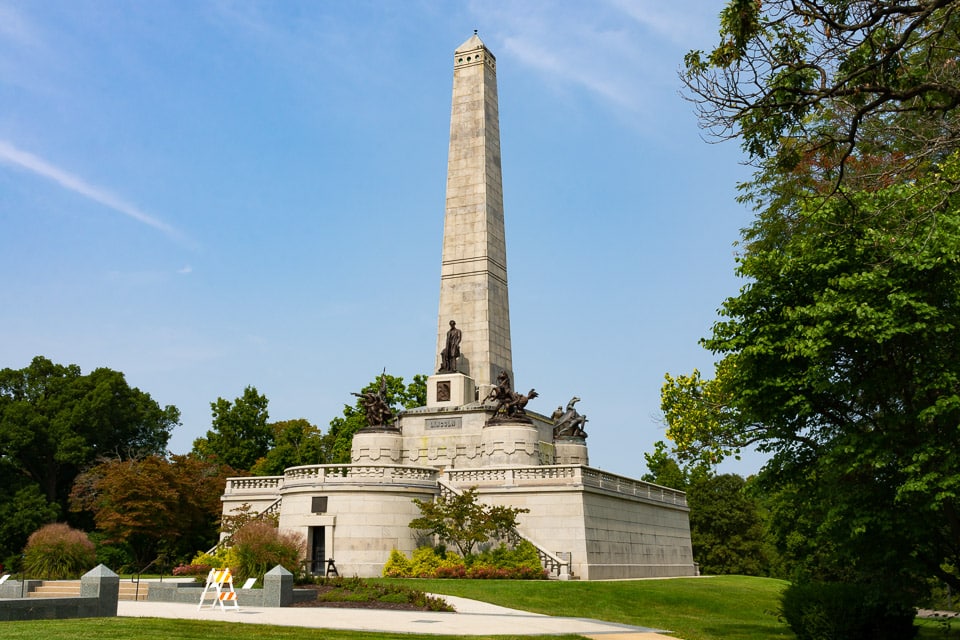
The tomb itself actually sits at the center of a 12-and-a-half-acre plot of land that makes up the whole site. It’s made up of a large granite base that’s topped off with a 117-foot-high obelisk.
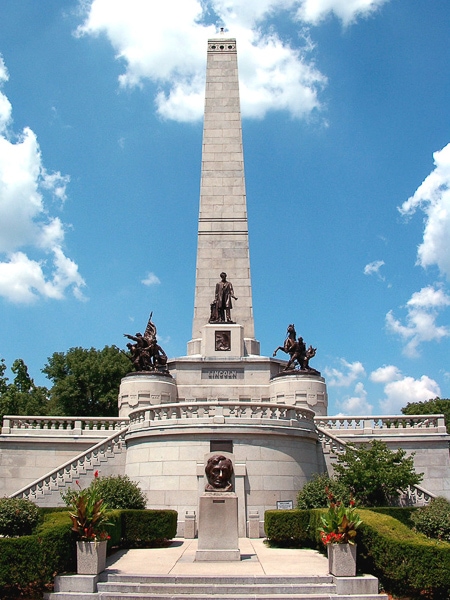
Four flights of balustraded stairs lead up to a terrace atop the granite base, but this part of the Lincoln Tomb is no longer accessible to the public, unfortunately.
Up on the terrace, there is a collection of ornate statuary and carvings. Four bronze statues sit on the corners, each representing a different aspect of the military during the Civil War period: infantry, navy, artillery, and cavalry.
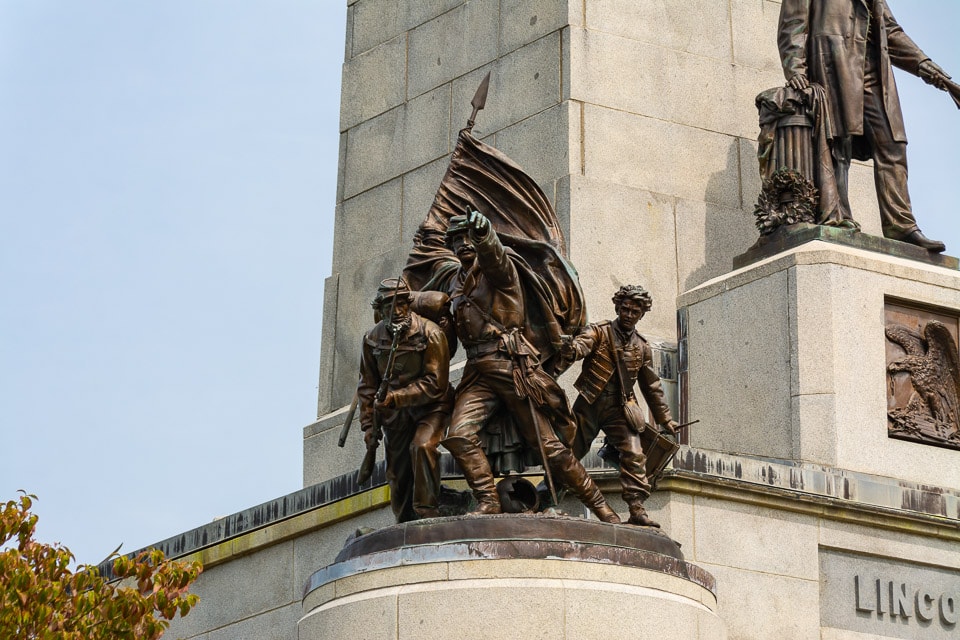
Right at the front of the towering obelisk is a statue of Lincoln himself. This bronze likeness of the late president was also the work of Larkin Goldsmith Mead, Jr.
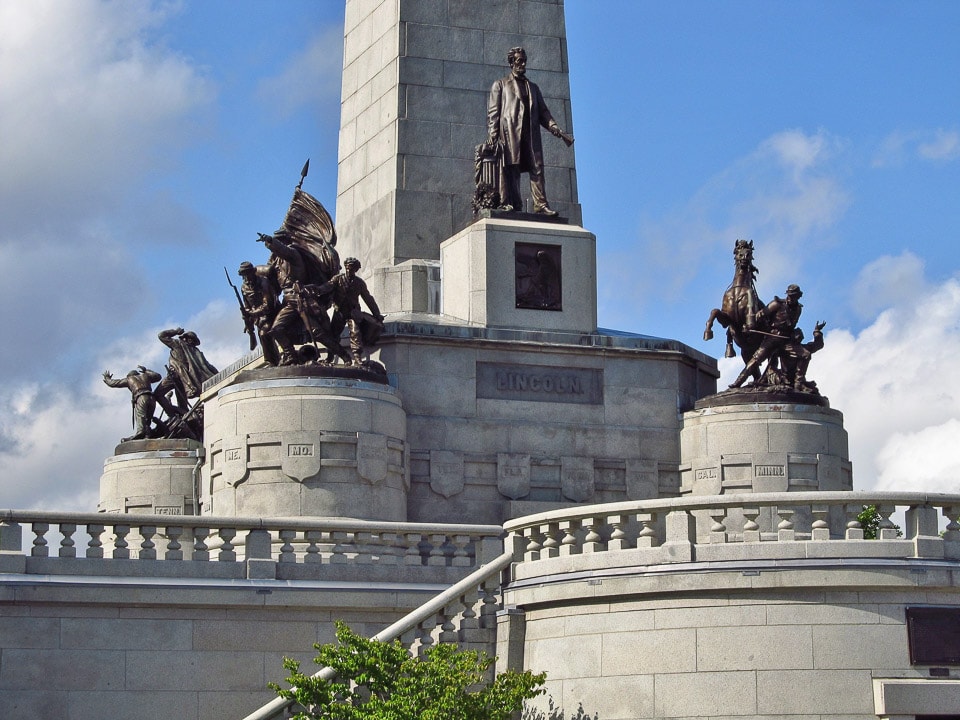
One particularly interesting aspect of Abraham Lincoln’s tomb is the fact that visitors may enter inside the memorial (even if they can no longer get to the terrace). Decorated with marble panels from several US states, as well as from as far afield as Italy, France, and Spain, the interiors comprise a rotunda, connecting corridors, and the burial room itself.
At the arched entrance to the interior of the tomb is a bronze statue of Lincoln by American sculptor, Daniel Chester French. Passing by this, visitors enter the rotunda which contains 36 bronze panels, each one symbolizing every US state at the time of Lincoln’s death (long before today’s 50). The ceiling is decorated with gleaming palladium leaf.
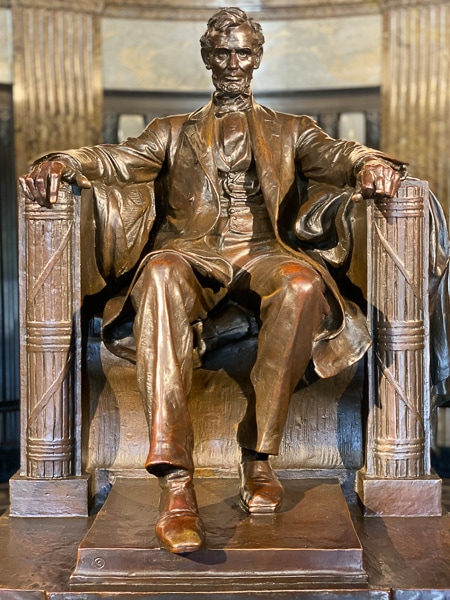
Corridors from the rotunda to the burial room feature niches, each with a statue illustrating important moments in the president’s life. On the wall, yet more bronze tablets are engraved with a variety of famous speeches made by Lincoln, including the Farewell Address and the Gettysburg Address.
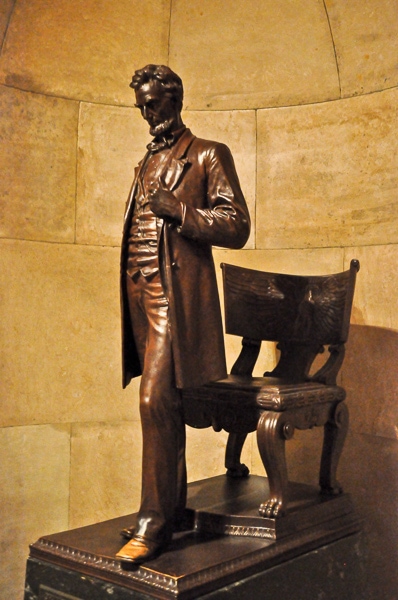
The burial room is the heart of the Lincoln Tomb. Lying under the chamber’s gold leaf ceiling is the seven-ton marble block that marks the point at which, though 10 feet below, Lincoln is laid to rest.

An inscription in the wall above a stained glass window- set in the back wall of the burial room- reads: “Now he belongs to the ages.”
Other Burials at the Lincoln Tomb
The Lincoln Tomb State Historic Site is, of course, the location of Abraham Lincoln’s grave. However, the former president is not the only person buried in this monumental setting.
The south wall of the burial room features four crypts. Here lie the remains of Lincoln’s wife and former First Lady, Mary Todd Lincoln, as well as three of their four sons: Edward, Willie and Tad.
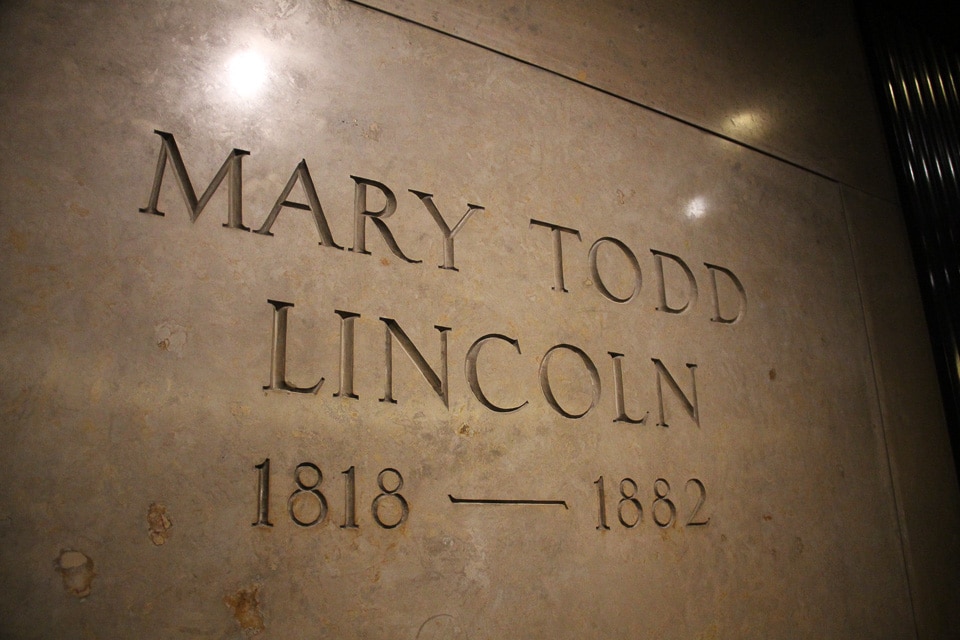
Robert Todd Lincoln, the oldest son of Mary Todd and Abraham Lincoln, wasn’t buried here. Instead, he chose to be buried at Arlington National Cemetery in Arlington, Virginia.
More Things to See at Lincoln Tomb State Historic Site
In addition to President Lincoln’s tomb, there are a few more points of interest you can see at the Lincoln Tomb State Historic site, including the receiving vault and custodian’s residence.
Oak Ridge Cemetery’s receiving vault served as a temporary tomb for Lincoln’s body after his funeral. The vault is hardly temporary though. This well-built structure is a worthy funerary building in itself and has remained in place long after Lincoln’s coffin was removed. A bronze plaque tells its story: “This vault held the remains of Abraham Lincoln from May 4, 1865 to December 21, 1865”.
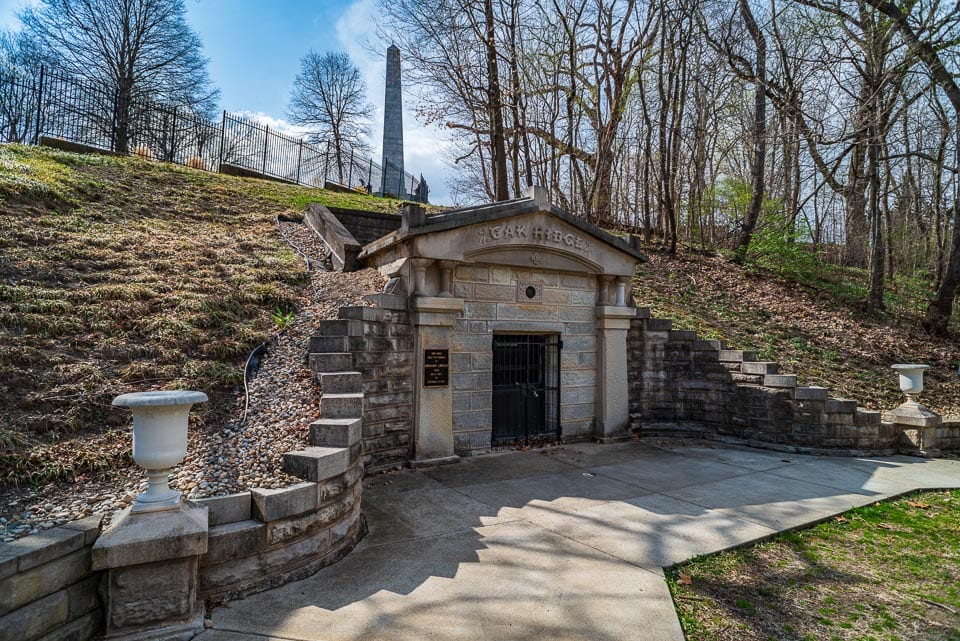
There’s also the custodian’s residence. This Gothic, castle-like building was constructed in 1895 to provide a dwelling for the Lincoln Tomb’s caretaker. Its construction coincided with the start of a six-year restoration project. Today, it remains in use as an office for the cemetery.
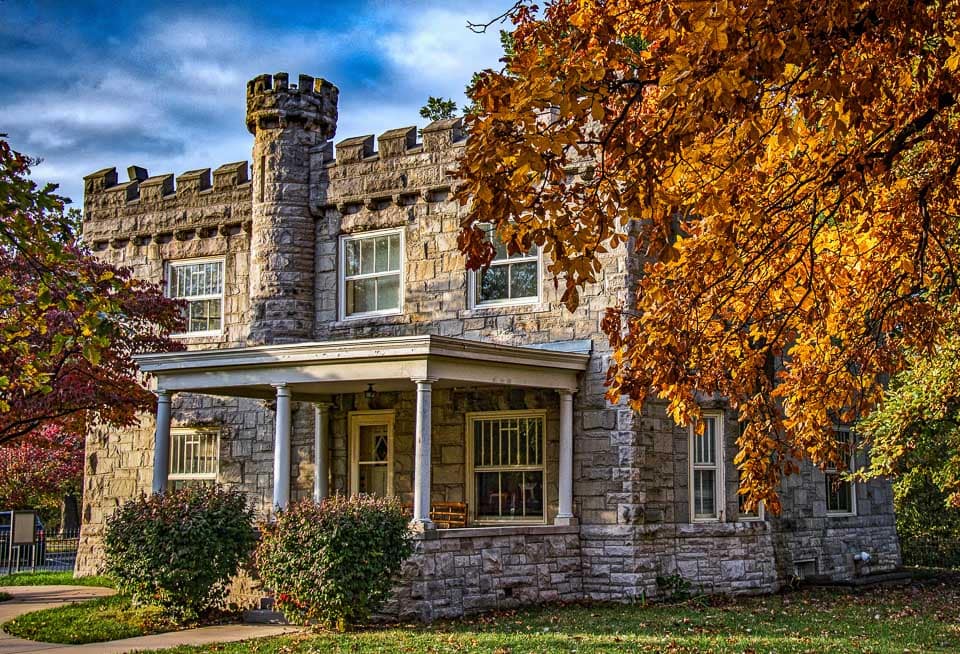
Interesting Facts About Abraham Lincoln’s Tomb
Here are a few more interesting facts about the Lincoln Tomb in Springfield, Illinois:
- In 1878, there was an attempt by two Chicago criminals to steal Lincoln’s body from the tomb and hold it for ransom. Because of this attempted grave-robbing, the association in charge of the memorial actually hid the body of Lincoln- first under some wood and then actually burying it in a different chamber of the tomb itself.
- There are more than just four other crypts at the Lincoln Tomb. However, these remain empty as the remaining members of the Lincoln family opted to be buried elsewhere.
- At the entrance to the Lincoln Tomb sits a large bronze head of Lincoln. The nose looks as though it has been well polished, but it’s stayed shiny thanks to countless visitors rubbing Lincoln’s nose for good luck. This sculpture by Gutzon Borglum is a reproduction of the marble bust he created of Lincoln that’s on display in the U.S. Capitol crypt.
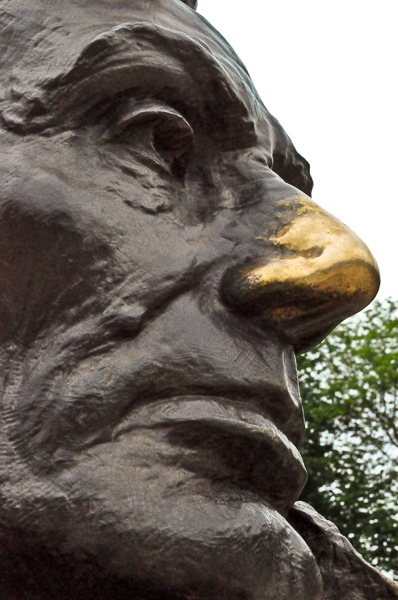
Final Words
In an otherwise quiet portion of Oak Ridge Cemetery, the Lincoln Tomb draws millions of visitors each year. Throughout its history of grand designs, donations, disrepair, restoration, and recognition as a place of national significance, this tomb has always been a hallowed spot for admirers of Abraham Lincoln.
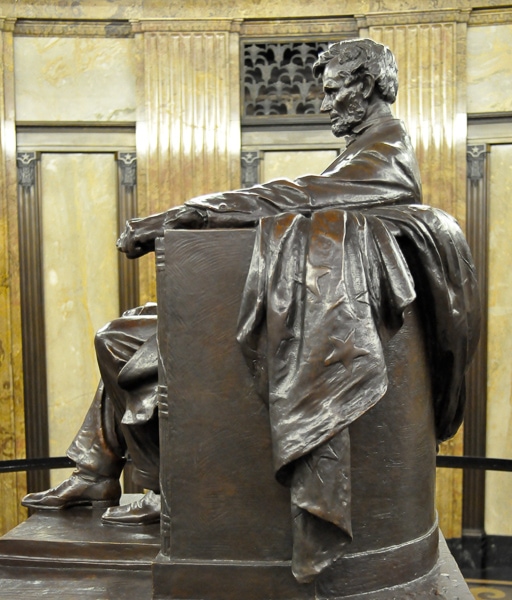
Practical Information for Visiting Lincoln Tomb State Historic Site
Location: Lincoln Tomb is located in Oak Ridge Cemetery in Springfield, Illinois.
Hours: Lincoln Tomb is open daily from 9:00 am- 5:00 pm. It is closed on New Year’s Day, Martin Luther King Jr. Day, Labor Day, Thanksgiving Day, and Christmas Day. Confirm current hours here.
Admission Fees: None
Parking: There is a parking lot across from the custodian’s residence just steps away from the tomb. Parking spaces for RVs and other large vehicles are available.
Springfield Accommodations
If you’re planning to visit Lincoln’s tomb and need accommodations, here is a list of hotels in Springfield, Illinois. Please consider booking your Springfield accommodations through the included link. It costs nothing extra and helps support this website.
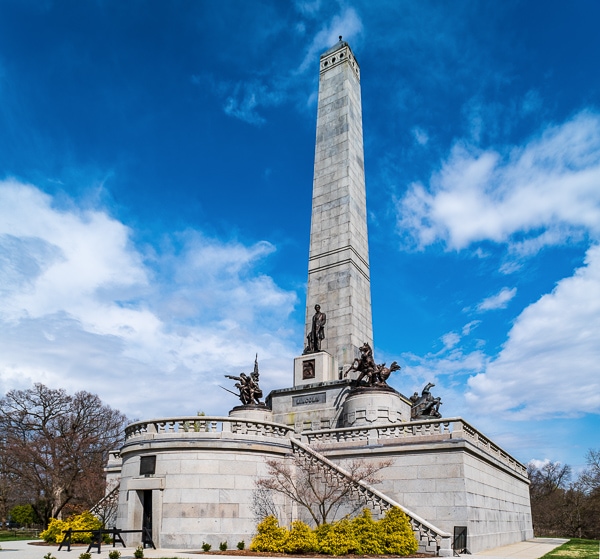
More Burial Places in the United States
- Presidential Burial Sites- Discover the Burial Places of U.S. Presidents
- Ulysses S. Grant’s Tomb- Guide to General Grant National Memorial
- Arlington National Cemetery- History, Design and Notable Sites
- Tomb of the Unknown Soldier- A Guide to Arlington National Cemetery’s Tomb of the Unknown Soldier
- Mount Auburn Cemetery- The First Rural Cemetery in the United States
- Magnolia Cemetery- Charleston’s Oldest Public Cemetery
